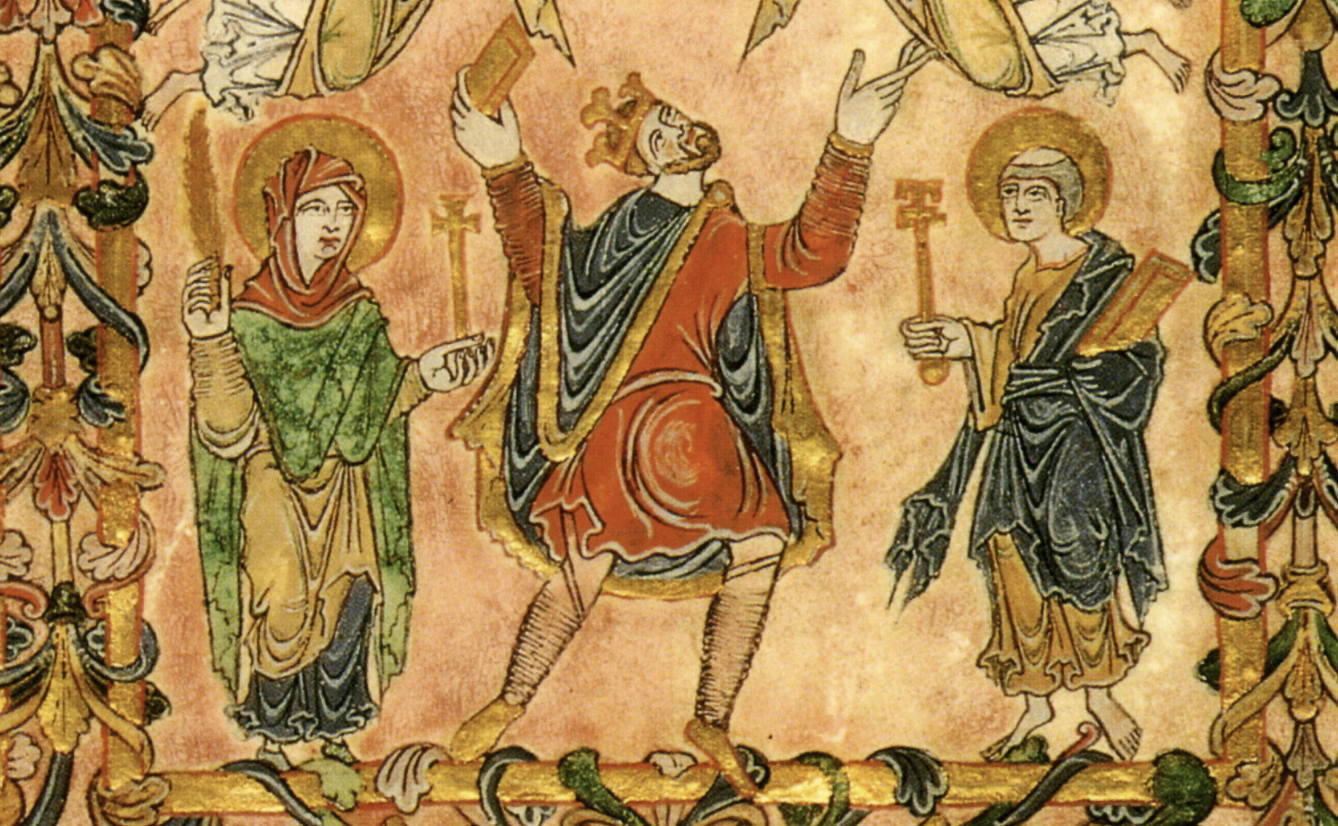The formalization of religious monasticism into the fabric of Christian identity coincided with the collapse of the Roman Empire. Historians mark the year 476 AD as its end when its last emperor Romulus Augustus was deposed. It is in crisis where monasticism takes on a truer sense of its own Christian identity.
Reflecting on the impact of monastics, Archbishop Rowan Williams writes:
“The life that Augustine, Aidan, Hilda and others lived was one that offered a new future to those around – a new level of mutual care, but also a new language in which to address God, the language of Christ himself.”
The Way of St. Benedict. (p. 46) Link
And it was exactly the context of cultural decay and crisis that gives rise to the most significant monastic order in Western Christendom – the Order of St. Benedict.
Benedict of Nursia, Italy was born in 480 just after the collapse of the Roman empire. Many see the date itself as symbolically tied to the rebirth of new hope for a Pax Christiana after centuries of striving for the next Pax Romana. In the lingering chaos of the fall of Rome, Benedict emerges with a simple plan for order, stability, and peace.
In an account similar to later reformers like St. Francis of Assisi and Dr. Martin Luther, Benedict was disgusted with the worldliness he encountered during his studies in Rome. The experience so radically affects him that he withdraws into a cave as a hermit for a period of three years. Much of what we know about St. Benedict was recorded years later by the biography written in St. Gregory the Great’s Dialogues, who records that, “he left Rome learnedly ignorant and wisely uninstructed.”
This is the same St. Gregory who would send his monk Augustine to convert the people of Kent in the British Isles.
News of St. Benedict’s cave dwelling devotion spreads and he’s invited to lead a community that soon multiplies into leading twelve. Drawing from John Cassian, St. Basil, and St. Augustine, Benedict is able to summarize the intent and character of his monastic predecessors into a small manual called a, “little ruler for beginners” with just seventy-three short chapters. His rule for monks and monasteries would spread throughout Europe and provided the post-Roman world with an influx of religious men trained in the Scripture.
His rule began with the simple phrase: “listen” and over the next century Benedictine spirituality would dominate monastic thinking by positing a rule that functions not only as a monastic identity, but also as a system back toward the ascetic theology that originally produced monasticism. Thornton writes that the, “consolidation of the three-fold order of prayer” was the greatest achievement of Benedict’s system and “absolutely fundamental to all catholic spirituality.” Up and against the uncertainty of civilization itself, Benedictine spirituality sets the equally ultimate ascetic ideals of the daily office, private devotions, and Holy Communion. The various characteristics of stability and intention that had marked monasticism for the past 600 years were now balanced in St. Benedict’s simple rule. The Rule produces not only a spiritual rhythm, but also one of growth where physical toil and intellectual labors are part of the balance of the common life. In Benedict’s system the work day is organized around the various hours of prayer. The traditional eight hours of matins, lauds, prime, terce, sext, none, vespers, and compline. The members of the Benedictine communities would read an assigned portion of scripture at each hour and work through the book of Psalms each week. Meals and work were interspersed on similarly organized schedules throughout the day, but ultimately subservient to the canonical hours of the monastic rule.
The origin of the ‘hours’ is traced back to authors before St. Benedict, but the number eight is often explained as the combination of the “seven times a day do I praise thee” of Psalm 119 with the eighth based on the declaration “At midnight I will rise to give thanks unto thee.” This emphasis on reading and inwardly contemplating the scriptures made the Benedictine monastery a center of learning. Each monk of the Benedictine order vowed not just to belong to a community, but also learned to read and participated in the process of copying the manuscripts of various religious texts.
In England, Scotland, and Ireland, St. Gregory’s envoy established the Rule of St. Benedict through St. Augustine of Canterbury. The large existing Celtic monastic communities came under increasing Latin influence after the Synod of Whitby in 664. English Christianity in the end of the 8th century was formalized into Roman style dioceses by Archbishop of Canterbury Theodore of Tarsus. The religious identity of the English people would then be cemented in the Benedictine influence with the direction of the church guided by monastic life and relationship with Rome.
Over the next centuries, benedictine leadership would dominate the church, including the elevation of Benedictine monk St. Anselm as Archbishop of Canterbury. The monastic communities would also give birth to the University. Oxford, England’s oldest university, traces its origin back to the Benedictine scholars like Gerald of Wales who taught during the reign of Henry III. The same king also granted a charter to the University of Cambridge. Scholarship in the Church in England was born from the monastic communities and formed the religious identity of English clergy. By the 13th century, England’s Benedicitine foundations had earned the respect of the Western world as Pope Gregory IX announced that a graduate from Cambridge had the right to teach anywhere in Christendom.

Leave a ReplyCancel reply